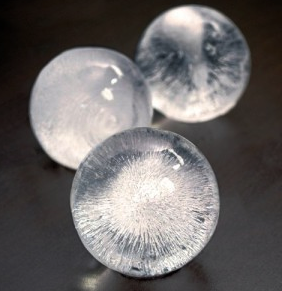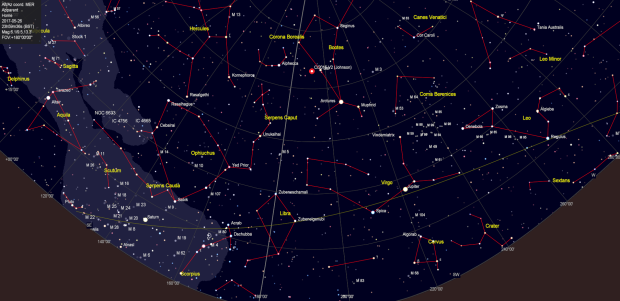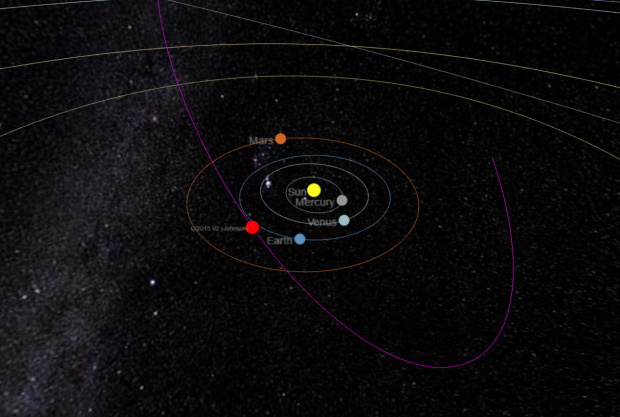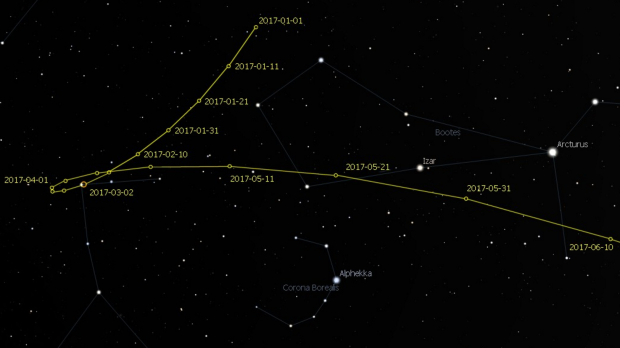
The next couple of months can be frustrating for astronomers in the Northern Hemisphere. We have just entered the period of summer during which there is no astronomical darkness and for those of us who enjoy the spectacle of a DSO there are also few around to image, especially of the larger Ha-type that my equipment is currently best suited to. However, there are compensations and with some imagination and a change of tack, it can be a useful time in which to do some housekeeping and return to objects not usually viewed.
I recently noticed that dust and the odd stray fingerprint had appeared on the object lens of my William Optics GT81! Opinion on how to clean this critical element is varied but all advice says: (i) be very careful, and (ii) do nothing unless you absolutely have to; in particular opinion is divided on whether to use alcohol-free cleaner. I therefore purchased some Baader Optical Wonder Fluid which comes recommended by many but for now confined cleaning to the use of a brush and compressed air to remove the dust and a Lenspen to gently polish the glass surface – the Wonder Fluid will have to wait until another day.
Warm temperatures that accompany summer are also a more comfortable time in which to undertake important tasks outside, such as re-setting equipment alignment, balancing, cable routing etc. I am therefore also replacing the mount power cable and EQDIRECT adapter cable, both of which look the worse for wear. Truth is the original cables were poor quality and, mindful of my disastrous camera cable problems this time last year, if possible I now intend to upgrade both these critical items. The experience of last year’s meltdown showed how prone cables are to low winter temperatures and I now see there are alternative silicon cables on the market – obviously I’m not the only one who’s suffered!
Of course we all want to be outside imaging and observing and a recent spell of very fine, clear, warm nights provided just such an opportunity – but what to do? There are some popular objects within the Solar System that are worthy of attention at this time of year, which for a change I therefore once again tried my hand at imaging, on this occasion a comet.
There have recently been no less than three notable comets in the night sky:
- 41P/Tuttle–Giacobini–Kresák: first discovered in 1858, the comet orbits the Sun every 5.4 years and this year was seen from Ursa Minor – Draco – Lyra between March and May.
- C/2017 E4 (Lovejoy): only discovered earlier this year by the inimitable Australian comet hunter Terry Lovejoy, the comet rises in the east-northeast above the star Enif in the early morning sky.
- C/2015 V2 (Johnson): probably this year’s most popular comet, was at full magnitude in Hercules during April but is still clearly evident to the east of Bootes from about 11pm – see below.

I have only once before imaged a comet, that being C 2014 Q2 Comet Lovejoy (him again) in January 2015, on this occasion I set out to image the aforementioned C/2015 V2 (Johnson). The comet will soon reach perihelion on 12th June and thereafter leave the Solar System. Travelling at a speed of 74,000 mph, imaging this small body of ice as it passes Earth is difficult and required going back to basics. It was also the first time since January that I had used the DSLR camera, which despite longstanding experience required some brushing up. At first I intended to follow the comet using the Custom Tracker facility in EQMOD but in the end this seemed unnecessary once I had the object centred in the camera and instead I resorted to a number short exposures at high ISO.

 I am pleased with the results, though they are a little noisy due to some stupid mishaps on my part along the way which left less imaging time than I would have wished. Though each comet is different, experimentation suggests that with good framing and guiding, exposures of about 2 minutes and ISO 3,200 produced the best results. Given this exciting experience, which was also good fun, I will hopefully not leave my return to comets so long as last time.
I am pleased with the results, though they are a little noisy due to some stupid mishaps on my part along the way which left less imaging time than I would have wished. Though each comet is different, experimentation suggests that with good framing and guiding, exposures of about 2 minutes and ISO 3,200 produced the best results. Given this exciting experience, which was also good fun, I will hopefully not leave my return to comets so long as last time.




Pingback: Planetary Playtime | WATCH THIS SPACE(MAN)